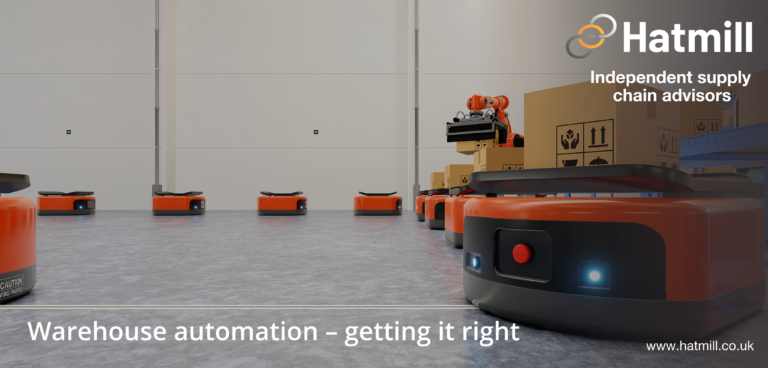Covid & Brexit are exacerbating labour shortages, companies are looking to automation as an answer.
The pandemic and Brexit have brought about a perfect storm for supply chains. It has led to seismic disruption in shopping behaviour, accelerating online sales by the equivalent of five years. Britain is experiencing the worst labour shortages since the late 1990’s. Companies building agility and resilience into their supply chain by embracing automation will be the ones who survive and thrive in the future.
When we talk about automation, for many it conjures up visions of massive state-of-the-art ‘Ocado-type’ automation facilities. But, Autonomous Mobile Robots (AMRs) and co-bots can help increase efficiency, providing manufacturers and retailers with new, more adaptable, automation options to integrate into supply chains. It’s important that companies explore options thoroughly to build confidence in the investment decision. And while there’s a temptation to move quickly, this needs to be balanced with patience to analyse the data and landscape before committing to expenditure.
Don’t rush into decision making
Yes, Brexit and the pandemic are exacerbating labour shortages but, automation isn’t a decision companies should rush into without thinking through business plans, automation applications, and the right choice of technology.
Decisions about technology made now will determine your cost base and ability to adapt in the coming years. Planning for this in a structured way will dictate how much value you can extract from your technology investment.
In light of the current landscape and advent of lower cost investment options such as Autonomous Mobile Robots (AMRs), the demand for automation has skyrocketed; providers are unlikely to devote sales time to projects that seem flimsy or ill-thought through. See our helpful guide by Tom McClinton and Rob Cottrell.
Don’t plan automation in a silo
Whether you’re looking at lower cost, nimble solutions like Autonomous Mobile Robots (AMRs) or full scale, state-of-the-art custom facilities, you’re not going to extract value from your investment unless you work across your entire organisation.
From the way you interact with suppliers down to how your staff restock products in your retail outlets, automating your supply chain or warehouse operations touches every part of your business.
Don’t view automation as a single entity in isolation. Instead, everything in your environment must be accounted for. If you want successful and scalable automation in your supply chain, leave no stone unturned.
Be ready to adapt and change everything, see more in our recent article by Terry Murphy.
Keep downtime to a minimum with a flow room
A flow room helps manage warehouse automation better. It controls the flow of orders through an automated warehouse from inbound through to dispatch.
With recent labour shortages, combined with social distancing in the face of surging online demand and stock availability issues, increasing the workforce is not an option; automation needs to work harder.
In this article, Nick Oxley shows how a flow room ensures control of everything that happens in the warehouse from an operational perspective. It makes timely business critical decisions, providing senior management with real-time visibility on how the operation is performing and managing the peaks and troughs in demand to ensure efficient flow through the warehouse.
Drive agility and max your ROI with change adoption
To realise the benefits of your transformation project you need to bring focus to the importance of your people and the role they play.
Your warehouse automation investment will transform your business – enabling your organisation to adapt in an uncertain world. But making a significant investment is only the first step, to speed your ROI and drive agility your whole organisation needs to be geared for change adaption.
A focused change adaption program alongside your warehouse automation project improves performance and creates a culture of continuous improvement. It helps apply agile ways of working across the whole organisation. Linzi Parry talks about it more.
Related insight: If you like this, you might also like:
Flow Rooms: Getting More From Warehouse Automation – Hatmill
Managing Change to Accelerate ROI
A-Z Guide: A Guide to Warehouse Automation Technology – Hatmill
Services: Warehouse Automation – Hatmill







